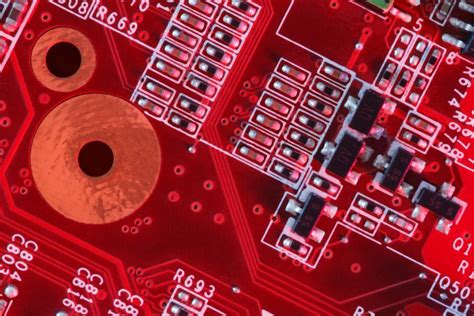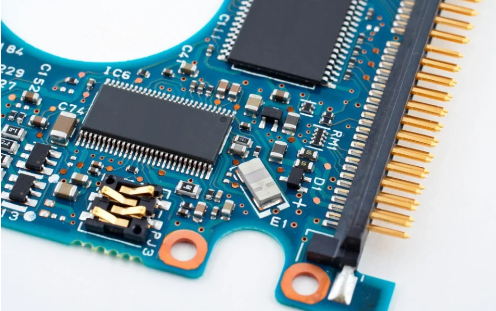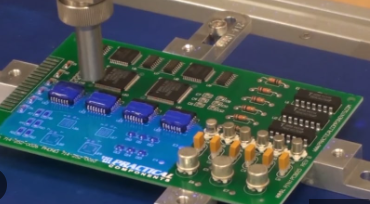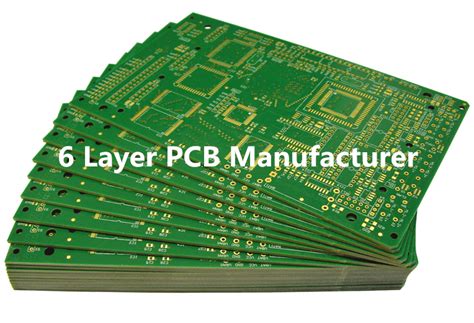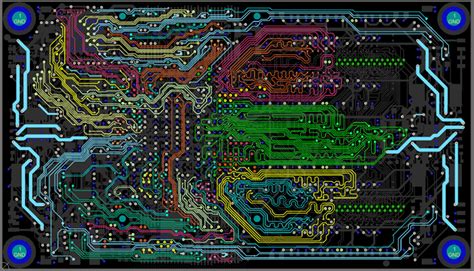Budget-Friendly PCB Fabrication for Rapid Prototyping
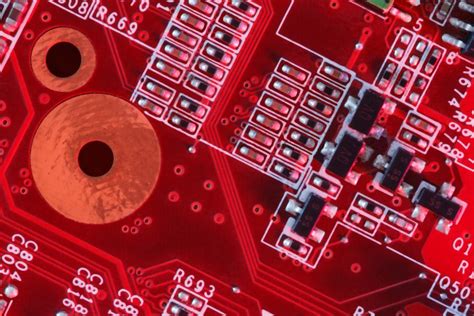
Key Takeaways
When exploring PCB manufacturing for rapid prototyping, understanding cost drivers and service options is crucial. PCB manufacturing cost typically depends on factors like board complexity, layer count, and material selection. Many PCB manufacturing companies now cater to hobbyists and startups by offering no minimum order policies and fast-turnaround services—some even deliver prototypes in under a week.
To maximize value, compare how different providers balance PCB manufacturing business models with quality. For example, some prioritize speed over advanced features, while others include free design checks to reduce errors.
Tip: Always verify if a manufacturer’s low-cost claim includes hidden fees for shipping or tooling. Transparent pricing structures are key for staying within budget.
If you’re prototyping on a tight timeline, focus on companies specializing in high-speed PCB fabrication. These services often streamline processes to cut costs without compromising reliability. Remember, selecting the right partner ensures your design iterates quickly from concept to field testing, keeping your project agile and affordable.

Ultra-Low Cost PCB Prototyping Solutions
When exploring PCB manufacturing for rapid prototyping, balancing affordability with quality becomes critical. Modern PCB manufacturing companies leverage advanced production techniques—like panelization and automated assembly—to slash PCB manufacturing cost without compromising functionality. For instance, opting for single-unit orders or standard FR-4 substrates can reduce expenses by up to 60% compared to traditional methods.
A key advantage of partnering with specialized PCB manufacturing business providers is their ability to eliminate hidden fees. Many now offer transparent pricing models, where costs scale predictably with board size, layer count, and material choices. Below is a comparison of common cost drivers:
| Factor | Low-Cost Option | Premium Option |
|---|---|---|
| Material | FR-4 (Standard) | High-Tg FR-4 or Rogers |
| Layers | 1-2 Layers | 4+ Layers |
| Surface Finish | HASL (Lead-Free) | ENIG or Gold Plating |
| Turnaround | 3-5 Days | 24-48 Hours |
To maximize savings, prioritize prototype-specific features like minimal solder mask colors or avoiding complex via structures. Many services also waive tooling fees for small batches, making PCB manufacturing cost manageable even for tight budgets. Always verify if your design aligns with the manufacturer’s design-for-manufacturing (DFM) guidelines to prevent costly revisions. By strategically selecting suppliers that cater to low-volume needs, you can iterate designs rapidly without overspending.

Top Cheap PCB Makers for Hobbyists
When searching for PCB manufacturing services that align with hobbyist budgets, you’ll want to prioritize companies balancing affordability with reliability. Several PCB manufacturing companies specialize in low-volume orders, offering streamlined processes to reduce PCB manufacturing cost without compromising quality. For instance, platforms like PCBWay and JLCPCB cater specifically to makers, providing instant quotes for prototypes as small as 1-5 units and eliminating setup fees.
These services often integrate hobbyist-friendly features, such as flexible design rules and open-source file compatibility, making them ideal for testing iterations. While comparing options, consider how PCB manufacturing business models differ—some providers offset costs by standardizing material choices or offering discounts for panelized designs. For example, Seeed Studio’s Fusion service includes free solder masks on orders under 10 boards, while AllPCB waives tooling charges for basic two-layer designs.
To maximize savings, focus on manufacturers with transparent pricing tiers and no hidden fees for file checks or revisions. Many now offer 24-hour turnaround times for simple designs, ensuring rapid prototyping aligns with tight budgets. By leveraging these specialized services, you can iterate designs faster and allocate more resources to functional testing—key for refining projects before scaling production.

Rapid Prototyping PCBs Under $50
When iterating on hardware designs, PCB manufacturing cost becomes a critical factor—especially when you need functional prototypes without overspending. Several PCB manufacturing companies now specialize in producing small batches (1-5 units) for under $50, making rapid iteration financially viable even for hobbyists. These services typically leverage standardized processes like 2-layer boards, FR-4 substrates, and basic solder masks to keep expenses low.
To hit this price point, prioritize suppliers offering economy-tier fabrication with no-frills features. For example, opting for a 1.6mm board thickness or limiting dimensions to 100mm x 100mm can reduce PCB manufacturing fees by 20–30%. Some providers even waive tooling charges for prototypes, further slashing costs. However, remember that lead times may extend slightly compared to premium services—though many still deliver within 5–7 days.
When comparing PCB manufacturing business models, look for transparent pricing calculators and bundled shipping. A few platforms offer discounts for first-time users or bulk prototyping orders, effectively lowering per-unit costs below $40. Just ensure your design files adhere to the manufacturer’s guidelines to avoid delays. By balancing affordability with reliability, you can test multiple design revisions without straining your budget.
No Minimum Order PCB Services
When exploring PCB manufacturing options for prototypes or small-batch projects, you’ll find that many PCB manufacturing companies now eliminate order quantity restrictions entirely. This shift allows you to order as few as one board without paying premium fees—ideal for testing designs before committing to bulk production. By removing minimums, these providers significantly reduce PCB manufacturing cost barriers, making it feasible for hobbyists, startups, or teams conducting rapid field trials.
A key advantage lies in flexibility: whether you need a single revised board or five units for parallel testing, you’re not locked into excess inventory. Some companies even offer tiered pricing models where PCB manufacturing business expenses scale transparently with your order size. However, remember that material choices, layer counts, and turnaround times still influence final costs. To maximize savings, consider sharing panel space with other orders—a common strategy among budget-conscious makers.
While low-volume orders might seem counterintuitive in traditional manufacturing, modern PCB manufacturing workflows prioritize accessibility. Always verify if providers include free design reviews or automated quoting tools, which streamline the process further. This approach ensures your projects stay agile without compromising quality, even at micro-scale production levels.
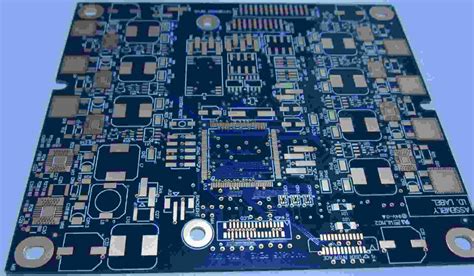
Fast-Turn Budget PCB Fabrication
When developing hardware prototypes, balancing speed and affordability in PCB manufacturing is critical. Many PCB manufacturing companies now specialize in delivering boards within 24-72 hours while keeping PCB manufacturing cost under $50 for small batches. These providers achieve this through streamlined processes, such as panel-sharing to reduce material waste, and bulk purchasing of common substrate materials like FR-4.
For rapid iterations, look for services that eliminate setup fees and offer instant quoting tools. Some platforms even automate design rule checks (DRCs), catching errors before production—saving you time and rework expenses. While traditional PCB manufacturing business models prioritize large orders, newer entrants cater specifically to low-volume needs, offering 1-5 unit runs with same-day prototyping options.
However, faster turnaround doesn’t mean significant compromises in quality. Reputable budget manufacturers adhere to IPC-A-600 standards for basic boards, ensuring reliable soldering and trace integrity. If your design requires advanced features like impedance control or HDI layers, compare tiered pricing structures—many firms charge premiums only for added complexity, keeping base PCB manufacturing cost low.
The key is matching your project’s requirements to the right service tier. For example, a 2-layer board with 8-mil traces can ship in 48 hours for under $30, while a 4-layer design might extend lead times slightly. Always verify if the provider includes free DFM feedback, as this avoids costly delays from design oversights. By prioritizing transparency in timelines and fees, you can leverage PCB manufacturing efficiencies without sacrificing speed for budget constraints.

Comparing Affordable Prototype Services
When evaluating PCB manufacturing options for prototypes, balancing cost efficiency with quality is critical. Many PCB manufacturing companies specialize in low-volume orders, offering competitive pricing structures that cater to startups and hobbyists. To identify the most budget-friendly service, compare material grades, layer counts, and turnaround times—key factors influencing PCB manufacturing cost. For instance, some providers reduce expenses by using standard FR-4 substrates instead of high-frequency alternatives, while others optimize production workflows to slash lead times.
Look for vendors that explicitly advertise no-tooling fees or flexible order quantities, as these features directly lower upfront investments. Leading providers in the PCB manufacturing business often bundle services like free DFM checks or discounted assembly options, further enhancing value. However, prioritize clarity in pricing tiers—ensure hidden charges for solder masks or silkscreen layers don’t inflate your total cost. Platforms offering instant online quotes simplify this comparison, letting you adjust specifications like board thickness or copper weight to see real-time price changes.
It’s worth noting that faster turnaround times (e.g., 24-48 hours) typically come at a premium. If your project allows, opting for a 5-day production window can cut costs by 30% or more. Always verify certifications like ISO or UL listings to ensure reliability, even when prioritizing affordability. By systematically analyzing these variables, you’ll pinpoint services that align with both your technical requirements and financial constraints.
Hobbyist-Friendly PCB Fabrication Options
For hobbyists exploring electronics projects, finding PCB manufacturing companies that cater to small-scale needs is critical. Many providers now specialize in low-volume PCB manufacturing with features tailored for prototyping, such as no minimum order policies and hobbyist-friendly pricing. These services eliminate barriers for creators who need just 1-5 units to test designs before scaling.
When evaluating PCB manufacturing cost, prioritize vendors offering transparent pricing tiers based on board size, layer count, and material choices. Some companies even provide free design checks to ensure your files meet fabrication standards, reducing costly errors. For instance, opting for FR-4 substrates over specialized materials can slash expenses while maintaining performance for most basic prototypes.
The PCB manufacturing business has evolved to support rapid iterations, with many platforms integrating instant quoting tools and automated feedback systems. If you’re designing for speed, verify whether your chosen supplier guarantees 1-week turnaround times—critical for maintaining momentum during field testing phases. Always cross-compare services like solder mask colors or silkscreen options, as these extras might inflate costs without adding functional value. By aligning your requirements with providers that balance affordability and flexibility, you can streamline prototyping without compromising quality.
Quick PCB Prototyping Under 1 Week
When timelines are tight, finding PCB manufacturing companies that deliver prototypes in under seven days becomes critical. Many providers now specialize in express services that streamline design validation, fabrication, and shipping—ideal for projects requiring rapid iterations. These services often leverage automated PCB manufacturing workflows, combining advanced routing algorithms with high-speed machinery to reduce lead times without compromising quality.
To minimize PCB manufacturing cost, look for suppliers offering tiered pricing based on layer count or panel sharing. For instance, 2-layer boards typically cost 30-50% less than multilayer designs, making them a practical choice for initial testing. Some companies even provide 24-hour turnaround for simple designs, though complex layouts (like HDI or flex PCBs) may extend timelines slightly.
Most PCB manufacturing business models now eliminate minimum order quantities, letting you order just 1-5 units for field testing. This flexibility aligns with agile development cycles, where quick revisions are common. Always verify if shipping options (e.g., DHL Express) are included in quoted timelines, as logistics delays can negate fabrication speed. By prioritizing vendors with transparent processes and real-time tracking, you ensure prototypes arrive ready for validation within your sprint schedule.
Conclusion
When evaluating PCB manufacturing options for rapid prototyping, balancing PCB manufacturing cost with quality remains critical. By choosing specialized PCB manufacturing companies that cater to low-volume needs, you eliminate unnecessary expenses while maintaining design flexibility. Many providers now offer hobbyist-friendly pricing models, enabling you to iterate designs without committing to bulk orders—ideal for field-testing early-stage concepts.
The rise of no-minimum-order services has democratized access to PCB manufacturing business ecosystems, letting you scale production only after validating prototypes. Prioritize suppliers with transparent pricing tiers and fast-turnaround capabilities, as these factors directly impact your project’s timeline and budget. Whether refining a single-board design or testing multi-layer configurations, affordable PCB manufacturing ensures you can fail fast, learn faster, and optimize efficiently.
Always cross-verify capabilities like material options, layer counts, and tolerances against your requirements—cost savings shouldn’t compromise functionality. With strategic planning, even constrained budgets can sustain rapid prototyping cycles essential for innovation.
FAQs
What factors most impact pcb manufacturing cost for prototypes?
Material selection, layer count, and turnaround time primarily determine expenses. Most pcb manufacturing companies offer tiered pricing—faster delivery and advanced materials increase costs, while standard FR-4 and 2-layer designs keep budgets low.
How do you choose between pcb manufacturing providers for small batches?
Prioritize vendors with transparent pricing calculators and no minimum order policies. Review their design guidelines to avoid costly revisions—many pcb manufacturing business platforms specialize in prototyping, offering instant quotes and automated DFM checks.
Can you get reliable PCBs with ultra-low-cost services?
Yes, but verify certifications like ISO 9001 and read user reviews. Reputable pcb manufacturing firms balance affordability with quality control, even for 1-5 unit orders. Opt for "basic specs" options to avoid unnecessary features inflating prices.
Why do some pcb manufacturing companies charge hidden fees?
Unclear pricing often stems from extra charges for solder masks, silkscreen colors, or expedited shipping. Always request a breakdown of pcb manufacturing cost before finalizing orders—budget-friendly providers list these details upfront.
How does rapid prototyping benefit pcb manufacturing business growth?
Fast iterations let you test designs in real-world conditions quicker, reducing time-to-market. Many startups use low-cost prototypes to secure funding or validate concepts before scaling production.
Ready to Launch Your Affordable Prototype?
Explore tailored solutions for your project—click here to get instant pricing and dedicated support from industry-leading pcb manufacturing experts.

